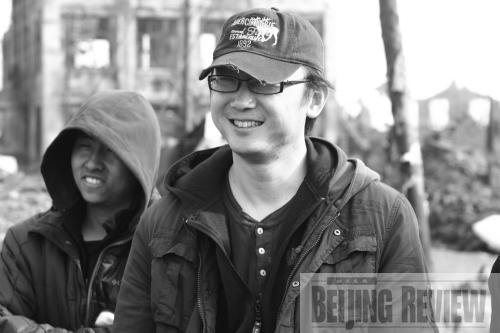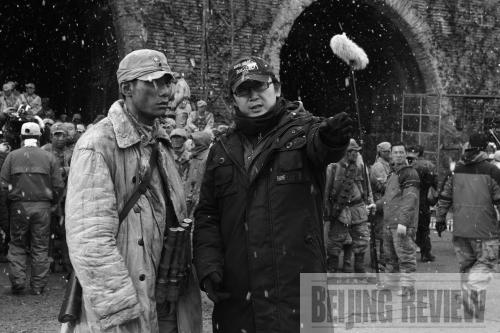|
|
 |
|
"What really made me decide to shoot the film in the first place was the fact that Chinese resistance happened and never stopped during the massacre." (COURTESY OF LU CHUAN) |
"We are going to shoot our next film about the Nanjing Massacre," Lu Chuan said six years ago to his cameraman Cao Yu. The two were busy making Lu's second film in the remote Hoh Xil Nature Reserve of the Qinghai-Tibet Plateau. Lu was 32 years old at that time.
It took him four years to make the unformed idea he mentioned then into City of Life and Death, in which the director struggled to find a way to tell the truth.
Beijing Review: There are already a bunch of films that cover the Nanjing Massacre, and some moviegoers don't want to buy a ticket and sit in the cinema to suffer through the pain. Add that to people's sensitivity to this moment in history and you are left asking what on earth prompted you to finish the hard-won film?
Lu: I prepared myself for a tough struggle when I decided to make the film, and I was soaked in the story for over four years of filmmaking. I want my film to tell people what was really going on during the massacre.
We did meet with unprecedented difficulties, and I must give thanks to those who helped—one of my friends who lent me 1 million yuan ($146,500)to support the film crew and our producer Tan Hong, who invested 2 million yuan ($293,000) after reading the script. The money helped see the crew through a long, hard time. The two of them are my age and we are the only people crazy enough to make this film. We started to prepare the costumes and locations even before the project was established and funds were settled. It's just like we were going to have a baby but still didn't have a marriage license!
We hung on at the most difficult time and hoped for a helping hand. What touched me most was when Tan said that all he had left was 1 million yuan and "if we spend all of it, we have to dismiss our crew."
 |
| HISTORY BACK: Director Lu Chuan (right) and leading actor Liu Ye during the shooting of City of Life and Death (WANG GONG) |
The situation turned better in 2007 when Han Sanping, Chairman of the China Film Group Corp., which is one of the largest distributors and exporters of Chinese films, came to visit us with other officials. He said he would support us young people. That was a really happy moment for us as we had kind of felt we would have to abort the film at the time.
The idea of filming the Nanjing Massacre first came to me when I visited the Memorial Hall of the Victims of the Nanjing Massacre. I was totally blown away by what I saw there. I barely finished the tour before the pain overfilled my heart and I felt like throwing up. I was not looking to relay the same feeling in my film, as it would be a disturbance to moviegoers and I don't want to pass the same physical reaction on to them.
In the past we interpreted the tragedy simply as the slaughter of innocent victims, but that's not the whole truth. What really made me decide to shoot the film in the first place was the fact that Chinese resistance happened and never stopped during the massacre.
There has never been a foreign invasion that did not see resistance from the Chinese people. So why did they allow themselves to be slaughtered during the Nanjing Massacre?
I want to present to the audience a different version of the Nanjing Massacre, showing them the Chinese did resist the invaders and restoring the real image of brave Chinese during the tragedy. It's not a film just about tears.
I found we Chinese people were so brave when I looked into the history of Nanjing. It did not matter that the soldiers and civilians were poorly equipped, because they fought the enemy and saved their compatriots at the cost of their own lives. However, their resistance failed due to military and political reasons. The story could have been filmed for a 30-episode TV series, including constant street combat after the city was occupied. Three months after the massacre there were still a few shots taken at the enemy from Chinese soldiers out of destroyed buildings' windows, which were documented in the diaries of the Japanese soldiers.
| 